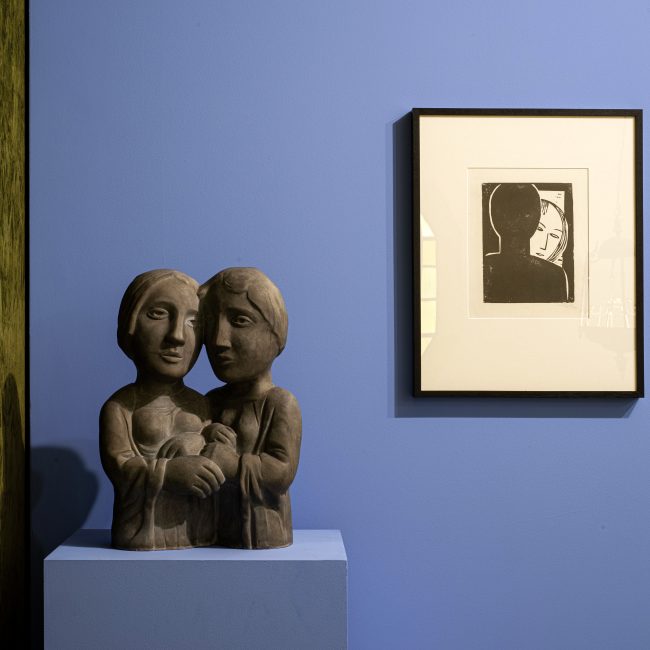Lasar Segall: Portrayals of the feminine
06/05 – 09/07 | wed – sun | 2 – 6 pm
LASAR SEGALL: PORTRAYALS OF THE FEMININE explores the portrayal of women in the work of Lasar Segall, especially after he moved to Brazil. Devised for Casa Museu Eva Klabin, the show inverts the poetic logic, using the collection of a woman to understand the artist.
The exhibition is divided into three sections — Family, Everyday Women, and Lucy Citti Ferreira — and creates a poetic encounter between works from three institutions with family ties and unique collections: Casa Museu Eva Klabin, Casa Museu Ema Klabin, and Museu Lasar Segall.
The exhibition begins with three works united under the theme of Family. Only one of these predates the time when Segall lived in Brazil: the portrait of Eva Klabin. Based on a photograph, the drawing is the first artistic evidence of Segall’s proximity to the woman who idealized this museum and collected the works it contains. The other two, Motherhood and Mother and Sons, introduce us to his nuclear family: his wife, Jenny Klabin, and their two children. The mother-child relationship is one that Segall explores in depth even in his youth, reappearing in the exhibition in paintings and in the sculpture Motherhood.
The second section, Everyday Women, consists of four depictions of female figures from poorer strata of Brazilian society. In Black Mother Among Houses, we again see a portrayal of motherhood, but this time as experienced by a woman from the periphery. The face of a black woman is the subject of Segall’s Female Portrait, while in Favela I, although the poor housing is populated by figures, the central space is devoted to the figure of a woman. The final work in this group is Couple from Mangue, which alludes to prostitution in the Mangue district of Rio de Janeiro.
Lucy Citti Ferreira — the third section — features three works in which Segall portrays his apprentice and model. Indeed, Lucy is the subject of several of Segall’s paintings, demonstrating his captivation with the delicacy of her actions as she lies in a hammock or combs her hair, while also giving her corpulence and presence.
The other element of this exhibition, present throughout, is the sculpture Two Friends. Through the artist’s gaze, the two women appear complicit, united in a single block. This work evokes a sense of sisterhood and reveals the potent form of women who share ideas (heads) and experiences (bodies). The exercise in imagination and exchange about the inner world is achieved in a sculpture of simple lines. The union of the two friends who become one is replicated in the exhibition. Lasar Segall: Portrayals of the Feminine brings forth the multifaceted stories, colors, and bodies of the artist’s world and fulfills its intention by sharing the secret and strength of diversity and union.
Juliana Cunha
Curator




